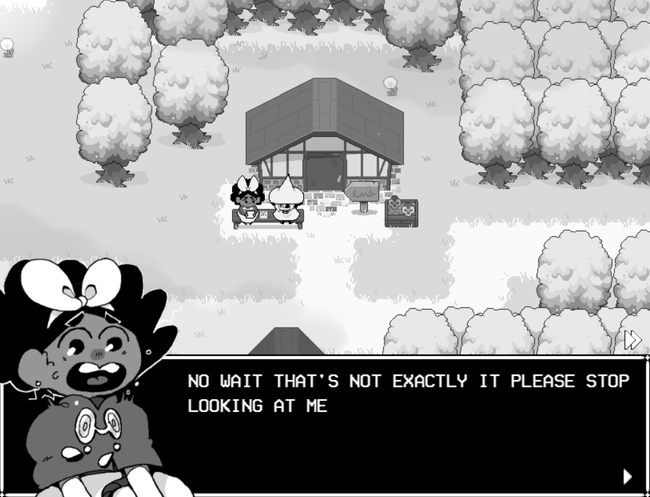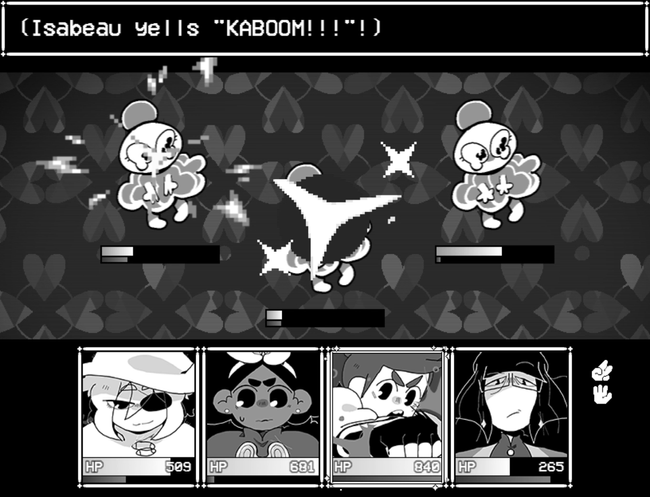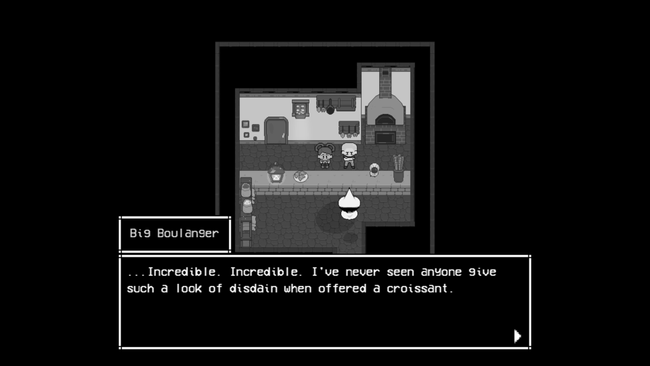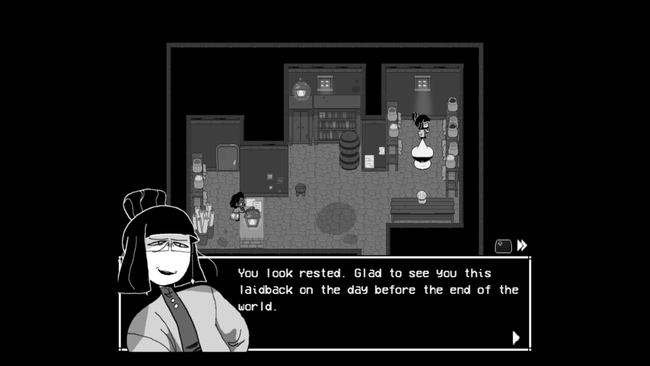In Stars and Time Review
I’m going to spoil the review below intentionally — In Stars and Time is a great game and is highly recommended. It’s a game that, honestly, the less you know going in, the better off you are. It has some issues, which I will discuss below, but it is ultimately an enjoyable exploration through concepts of life and death. While I absolutely intend to keep the review as spoiler-free as possible, some minor spoilers are necessary to discuss the game at all. If you want to know more, and don’t mind a little spoiler action, then let’s start at the best place for any time loop story: the end.

Not the end of the game, of course, that’d be silly. In Stars and Time actually puts you, the player, at the end of the party’s journey. Your characters are all level 45, they ruminate on the many trials and tribulations they previously experienced, and they are especially worried about the upcoming final fight against The King, an evil entity that has somehow managed to freeze most of the continent in time.
You assume control of Siffrin, a taciturn, one-eyed roguish type with a wide-brimmed hat. You’re great at puns, but awfully forgetful about a lot of things — not just your past (though trying to remember your homeland gives you a massive headache), but you are actively forgetting common words like “kiln” and “stuffed animal” as you journey. Joining Siffrin are Mirabelle, a somewhat shy Handmaiden of Change, Odile, a stern Researcher from a far-off land, Isabeau, a headstrong ex-Defender from another country, and Bonnie, a child who lost their homeland (and their sister) to the time curse.
After you gather your party, you begin to explore the House of Change, the usurped throne of The King. Roaming inside of the House are an endless number of Sadnesses, creatures who block your path up towards your goal. Combat in In Stars and Time follows your standard turn-based RPG formula — your party and enemies act in sequence based on attack speed, and everyone adheres to a Rock-Paper-Scissors combat triangle. Enemies who make Scissors hand signs are inherently strong against Paper and weak to Rock, as an example.

While it seems simple, what makes the combat actually work is the All Out Attack system (it’s not actually called an All-Out Attack, but functionally, that’s what it is.) When you build five marks of the same RPS sign (i.e. attack five times in a row with Rock), you will deal a massive AoE attack that also replenishes your party’s HP by about 50%. This is trickier to do then it sounds, because your party members only know certain attacks — Isabeau is strictly Rock focused, while Odile can use Craft Spells to attack with any type (once every few turns, of course.) This makes fighting specific bosses more like a puzzle than anything else, as you can pass turns from one party member to another to speed up their cooldowns or build All-Out Attack marks.
After delving a short distance into the House, Siffrin…immediately gets killed. Being not very good at their job of “trap-finder”, Siffrin is crushed by a rock trap. Instead of ending the game, you are whipped back to the fields of Dormont, the town where you started the game. You soon learn that you have the power to warp back and forth to specific points in time, but no further than the fields of Dormont and, eventually, the top floor of the House. This is achieved by either intentionally dying or touching various Tears in the House that freeze you in time. Some of these effects are funny — for example, you can slip on a Banana Peel in Dormont and crack your head open on a rock to loop forward in time — and some are extremely terrifying.

What In Stars and Time does best, however, is build the world around “found family.” Even though you aren’t privy to anything except snippets of the adventure that concluded before the game starts, you are slowly and methodically revealed more and more information about your party, Siffrin, the townsfolk, and even The King. You explore each party member’s motivations, fears, and beliefs through a series of side-quests that ultimately end in them growing, changing, and accepting whatever comes after you defeat The King. And, of course, since you have to do this every single time you loop, the game hands you a nifty fast-forward/skip option. After all, why not just skip over the heart-wrenching tales you’ve already seen?
On the technical side of things, there have been a few bugs. Every now and then when I fast-forwarded through old dialogue, it would start fast-forwarding through all dialogue, including new dialogue, with no way to stop or turn it off. This necessitated a restart of the game, so I’d recommend rotating your saves as you progress, just in case. There were also a few instances of sound and music not matching the scene, but these were not immediately game-breaking, merely distracting.

Outside of bugs, I do have a few nitpicks with the game. During Acts 2, 3, and 4, you will be tasked with information gathering. While you have the ability to phone-a-friend, sometimes that friend isn’t exactly clear on where you should go, offering only “You should explore the House more!” as a tip. Sometimes, in order to properly explore the House, you will be required to fight the same mini-bosses to get one-time use keys, which open one of three or so path options. If you pick the wrong path, congratulations, you have to loop back and do the floor over again.
It does get frustrating having to track down all the keys necessary to access that mini-boss, especially since Sadnesses are uncannily good about getting in your way, even if you try to avoid them. There are items you can equip to make them run away from you, but it still is a pain traveling through the same locales each and every loop just to find one specific pixel to investigate. Which I understand is the point of a time-loop, but it doesn't make it fun.
Sometimes examining the same objects repeatedly is good — new dialogue options pop up from time to time, showcasing Siffrin’s growth (and eventual boredom) with doing the same thing repeatedly. One example is a countertop that Siffrin slams their hip into every time you pass it — the first few times, he’ll say “nya” in pain (and get rightfully ribbed by his team for it), but eventually it becomes habit and he ignores it entirely. The downside to this is outside of a few instances, re-examining the same object yields nothing but extremely minor dialogue differences, which can make exploring the House tedious.

Finally, I would be remiss if I didn’t mention the representation this game brings. I myself am bisexual, and resonated really well with the side plot of Isabeau and Siffrin’s repeated, comical failures to confess their feelings for each other. (In one instance, the confession is interrupted by Mirabelle loudly demanding a group hug, breaking Isabeau’s will and shutting the whole thing down.) There’s plenty more representation in the game for ace, trans, and more, but it’s heavy spoiler territory, so I’ll leave it at that.
In Stars and Time ran me approximately 12 hours to complete, but I was attempting to do every side-quest — it will take the average person a little less time if they streamline the game. Despite a few glaring bugs and technical issues, it is a wonderfully written and earnest game about the bonds of friends, family, and where one becomes another. The game tackles heavy topics (as their content warning immediately warns you about), but does so in a way that treats the subject matter seriously, and gives it the time and respect it deserves within the story.
If you’re a person who maybe saw an antagonistic meme once about “quirky indie rpg about depression” and decided to make hating those your entire personality, move on — there’s nothing for you here. But if you’re willing to engage with content about mental health seriously, and explore the concepts of life, death, what what it would actually feel like to be trapped in a loop, forcing your friends and family to do certain tasks repeatedly — then you’ll find a thought-provoking and well-written story within In Stars and Time.